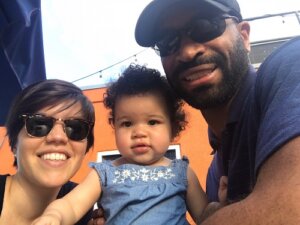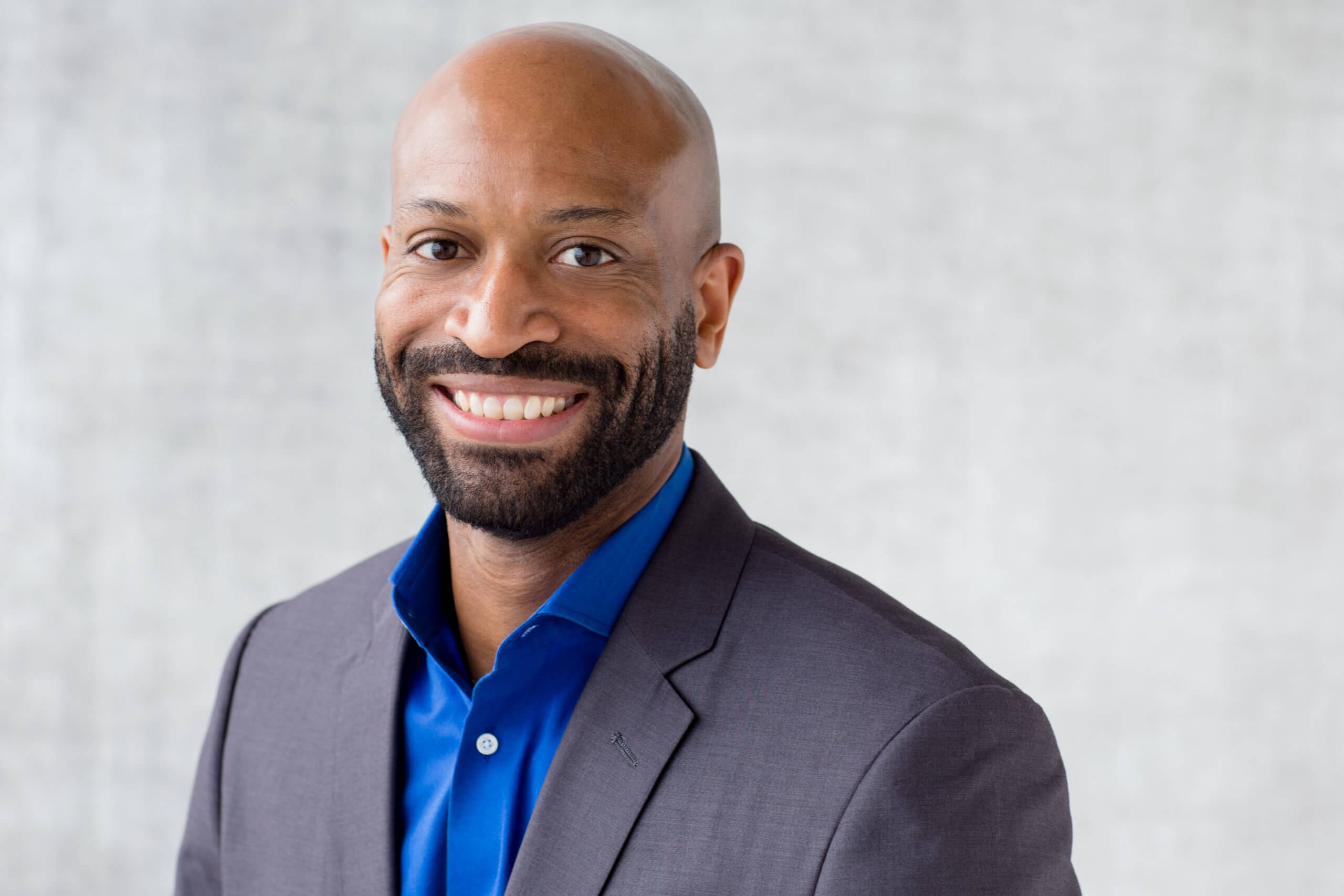Getting to Know the La Piana Team: An Interview with Onuka Ibe
We recently interviewed Onuka Ibe, Senior Consultant, about the path that brought him to consulting and what he sees as some of the most important the issues, challenges, and opportunities that nonprofits face today.
 This blog post is part of our series featuring the La Piana team. This week, we spoke with Onuka Ibe, Senior Consultant. Based in D.C., Onuka joined the firm in August 2017 and works with nonprofits and foundations nationally.
This blog post is part of our series featuring the La Piana team. This week, we spoke with Onuka Ibe, Senior Consultant. Based in D.C., Onuka joined the firm in August 2017 and works with nonprofits and foundations nationally.
Why did you decide to focus your career on the nonprofit sector?
For the first ten years of my career, I never even considered working at a nonprofit. I earned an undergraduate business degree and an MBA and envisioned myself running a business someday. My career in the nonprofit sector started when an MBA classmate of mine who had recently joined a nonprofit convinced me that my skills and business experience could help the organization better demonstrate its impact and scale its operations. The organization was serving 5,000 youth at the time and wanted to grow its reach to 50,000. I was intrigued by the operational challenge, but became hooked on the power, community, and potential of the nonprofit sector as I engaged with more staff, volunteers, philanthropists, partners, and board members.
Having worked in other sectors, what have you learned that you now bring to your work with nonprofits?
I find that my ability to bring both a business and nonprofit perspective can be extremely valuable. There are many things that businesses figured out long ago that can be implemented effectively in a nonprofit organization. But there are very different cultures, expectations, motivations and operational challenges in the nonprofit sector that businesses do not have to face.
I think there’s a Hollywood image out there of some inventor or tech wizard who pitches an idea that’s just so groundbreaking that they become a millionaire overnight. But that doesn’t happen in the nonprofit sector. It’s not like selling a product to a single customer. When the person benefiting from the service is not the person paying for it, there’s a whole array of different stakeholders who need to value what you’re offering for it to be viable and sustainable. That’s not to say it’s easy to be a successful businessperson, but there is something simpler about the for-profit model than the third-party-payer structure of the nonprofit sector.
You spent the past several years with College Summit working to improve college access for low-income youth. What did you learn from that work about engaging cross-sector partners, students, and/or other community stakeholders?
Nothing happens without a community of stakeholders coming together. And finding the right combination that results in a product or service that has measurable benefits, can be sustainably funded, and delivered efficiently requires a tremendous amount of effort and leadership — and often good timing. In our college access work, we contracted with school districts, worked directly with teachers, received funding from philanthropists, corporate funders, and government, and were managing a volunteer corps comprised of both community-based volunteers and program alumni. So much of success is being in the right place with all the right people at the right time.
What do you find most rewarding about being a consultant to the sector? What do you find most challenging?
One thing that attracted me to consulting was the opportunity to have a broader impact. Instead of working deep on the issue areas of one organization, I get to assist a wide variety of nonprofits working on many important issues. I believe I can help a lot more people and communities this way. I also enjoy having the outsider perspective; it can often be easier to see the root of a challenge when you are not embedded in the day-to-day operations of an organization. But that is also what can provide some of the greatest challenges: helping a client to see what may not be immediately apparent and then to create an effective strategy to address it.
What is something that most people don’t know about you?
I was born in Nigeria but came with my parents to the United States as a small child, so I have a multicultural and multinational perspective on things. This perspective has shaped my approach to working with others in so many ways. I tend to start from a place of quiet observation, seeking to understand people’s perspectives and motivations, to assume there could be something going on for them that I don’t know about. I believe strongly that people are generally motivated by what they feel are the best of intentions (whether I agree with them or not) and understanding those intentions, their perspective, and their motivations is critical to solving problems together. Once you can figure out what makes someone tick, it opens up all new ways of engaging them toward a solution.
What do you see as the top challenges and/or opportunities facing the sector today?
I think many nonprofits still see competition as a negative concept that belongs in the business world. But the reality is that there’s a limited amount of funding, potential board members, media visibility, and other resources. There’s opportunity in helping organizations embrace competition, not as something undesirable or in conflict with community-centered values, but as a lens for prioritizing their efforts as a way to improve. Competitiveness is important for avoiding complacency, where nobody’s thinking creatively about how to do the work significantly better. It’s not about vanquishing the other organization, like we often see in the for-profit world; it’s about achieving your mission as effectively and faithfully as possible, especially as the environment changes. Part of what is great about this mindset is that sometimes an organization can find it can be most competitive by collaborating strategically with its competition.
What advice would you give new and emerging nonprofit leaders?
Connect, collaborate, and use passion as a tool, not a shackle. I was talking to a friend who works in the oil industry in Texas about the relationship between employee motivation and an organization’s goals, and he said to me: “In my sector, I have a hard time getting people to care enough; you’ve got people who care too much!” In the nonprofit sector, people are highly committed, but often they’re not able to balance that passion with adequate attention to sound organizational practices or to see beyond their own silos. The most effective nonprofit leaders harness passion, but also provide the direction and structure to channel it in a way that propels the organization — and the mission — forward.
Additionally, learning how to measure and communicate impact can accelerate the trajectory of an organization. It is hard enough just to collect good operational and impact data, but if your audience doesn’t understand what it means, or if it doesn’t support a compelling narrative, it’s not going to be useful. Doing monitoring and evaluation well can differentiate one organization from another.
What do you enjoy doing outside of work?
In college, I joined Delta Sigma Pi, an international business fraternity for men and women, and I have served in a variety of volunteer roles. I recently completed a term as the president of the organization and currently serve on the boards of the fraternity and its educational foundation.
 With a toddler at home, my wife and I are kept on our toes. We enjoy chasing our daughter around and watching her learn new concepts every day. [Photo at right: Onuka, with his wife Michelle and their daughter.]
With a toddler at home, my wife and I are kept on our toes. We enjoy chasing our daughter around and watching her learn new concepts every day. [Photo at right: Onuka, with his wife Michelle and their daughter.]
Is there a particular book or movie that has recently made an impact on you?
As a new parent, my life has included a lot of Sesame Street lately. It’s really kind of amazing, I didn’t realize it was designed around a research-based curriculum. I was recently reading an article about it that said that for Pre-K kids, Sesame Street provides the same, or in some cases better, education than other education systems — and with a much stronger focus on diversity. I find that impressive, as both an educator and as a parent.


Comment section